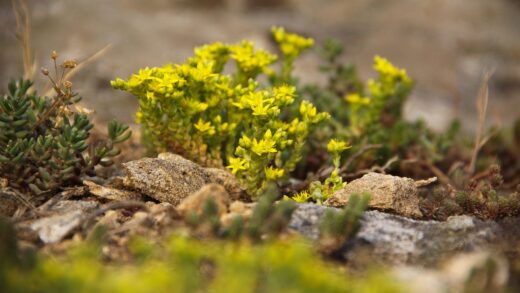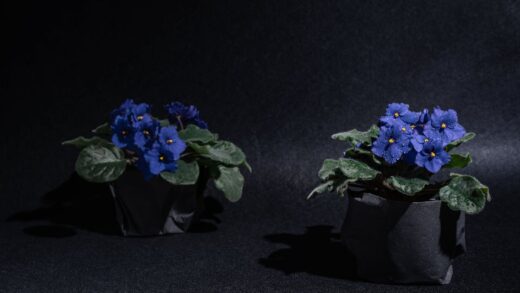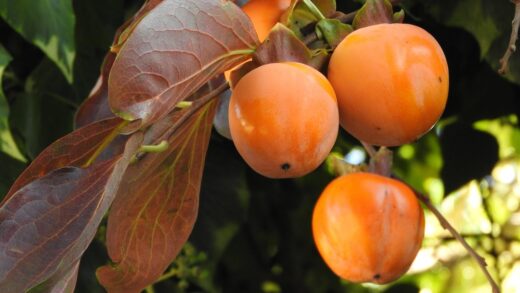Water is the lifeblood of any plant, a fundamental component for everything from photosynthesis to structural integrity, and understanding the specific water requirements of the laurustinus is key to its cultivation. This evergreen shrub has a well-earned reputation for being drought-tolerant once established, yet this resilience can sometimes lead to neglect. Proper irrigation, especially during critical periods of its growth cycle, ensures not only its survival but also its ability to thrive, produce lush foliage, and deliver its signature winter floral display. Mastering the art of watering involves knowing when to water, how much to apply, and how to adapt your practices to the changing seasons and the plant’s environment.
The role of water within a plant is complex and multifaceted, extending far beyond simple hydration. It acts as a solvent, transporting essential minerals and nutrients from the soil up through the roots and into the leaves, where they are used for various metabolic processes. Water is also a key reactant in photosynthesis, the process by which plants convert light energy into chemical energy for growth. Furthermore, it is responsible for maintaining turgor pressure within the plant cells, which keeps the stems and leaves rigid and upright; a lack of water leads to the visible wilting that signals dehydration.
For laurustinus, a sufficient water supply is particularly crucial during two key periods: immediately after planting and during the late summer and autumn when it is setting its flower buds for the winter. A newly planted shrub has a limited root system and is entirely dependent on the moisture within its immediate vicinity to survive and establish itself. Consistent watering during its first year is non-negotiable. Later in the season, drought stress can cause the plant to abort its developing flower buds, leading to a sparse or non-existent winter display, which defeats one of the primary reasons for growing this shrub.
Understanding the signs of both under-watering and over-watering is a vital skill for any gardener. An under-watered laurustinus will show signs of stress such as wilting, drooping leaves, and a general lack of vigor, and the foliage may turn a dull, grayish-green color before eventually yellowing and dropping. Conversely, over-watering is often more insidious and can be more damaging, leading to root rot. Symptoms of over-watering can ironically mimic those of under-watering, including yellowing leaves and wilting, because the waterlogged roots are unable to function properly and absorb oxygen and nutrients.
Irrigation for newly planted shrubs
The period immediately following planting is the most critical time in the life of a laurustinus when it comes to water. The transplanting process inevitably causes some stress and damage to the root system, temporarily impairing the plant’s ability to absorb water. During this establishment phase, which can last for the entire first growing season, the shrub is highly vulnerable to drying out. Therefore, providing consistent and adequate moisture is the most important task to ensure its survival and encourage the rapid development of a new, healthy root network.
More articles on this topic
The very first watering should happen immediately after the shrub is in the ground. This initial, deep soaking is essential for several reasons. It provides much-needed hydration to the stressed root ball, but just as importantly, it helps to settle the backfill soil, eliminating any large air pockets that may have formed around the roots. These air pockets can cause sections of the root system to dry out and die, so ensuring good soil-to-root contact is paramount. Water slowly and thoroughly until the entire area is saturated.
For the first few months, a regular watering schedule is necessary. The goal is to keep the root ball and the surrounding soil consistently moist but not waterlogged. A good rule of thumb is to check the soil every two to three days, especially during warm or windy weather. You can do this by inserting your finger about two inches into the soil near the base of the plant. If the soil feels dry at that depth, it is time to water again. This hands-on approach is far more reliable than watering on a fixed calendar schedule, as it accounts for variations in weather and soil conditions.
When you do water, it is crucial to do so deeply to encourage the roots to grow downwards into the soil profile. A light sprinkling on the surface does little good, as the water will evaporate quickly and encourage shallow rooting, making the plant less resilient in the long term. Use a soaker hose or let a regular hose trickle slowly at the base of the plant for an extended period. This allows the water to penetrate deeply into the ground, replenishing the moisture reservoir where the developing roots need it most.
Watering established plants
Once a laurustinus has been in the ground for a full year or more and has developed a robust and extensive root system, its water requirements decrease significantly. At this stage, it is considered well-established and exhibits excellent drought tolerance, making it a low-maintenance choice for many garden designs. However, “drought-tolerant” does not mean “no water ever,” and even mature plants will benefit from supplemental irrigation during certain periods to maintain optimal health and appearance, particularly in regions with hot, dry summers.
More articles on this topic
For most of the year, an established laurustinus growing in the ground will be able to obtain sufficient moisture from natural rainfall. Its deep roots can access water from lower down in the soil profile, helping it to withstand short-term dry spells without showing signs of stress. In temperate climates with regular rainfall, you may not need to provide any supplemental water at all once the plant is mature. This resilience is one of the key attributes that makes it such a popular and reliable landscape shrub.
The exception to this is during prolonged periods of drought, especially in the height of summer. Even the toughest plants have their limits, and several weeks without rain combined with high temperatures can put a strain on a laurustinus. During these times, it is wise to provide a deep soaking every few weeks. This is far more beneficial than frequent, shallow watering. A slow, deep application of water will replenish the moisture reserves deep in the soil, sustaining the plant until the next rainfall.
It is also important to pay attention to the plant’s needs in late summer and early autumn. This is the critical period when the shrub is forming the flower buds that will provide its winter display. Even if the plant does not show visible signs of wilting, a lack of sufficient moisture during this bud-setting phase can lead to a significant reduction in the quantity and quality of the flowers. Providing one or two deep waterings during a dry spell in late summer can make a huge difference in the floral performance a few months later.
Special considerations for container-grown plants
Growing laurustinus in a container offers great flexibility but fundamentally changes its relationship with water. A plant in the ground has the entire soil volume of the garden to draw moisture from, while a containerized plant is restricted to the small amount of potting medium in its pot. This limited reservoir dries out much more quickly due to exposure to sun and wind from all sides, making the plant entirely reliant on the gardener for its hydration needs. Consequently, container-grown specimens require a much more diligent and frequent watering regime.
The frequency of watering for a potted laurustinus can vary dramatically depending on several factors, including the size of the pot, the type of potting medium, the weather, and the time of year. During the heat of summer, a plant in a sunny or windy location might need to be watered every single day. The best way to determine its needs is to check the compost daily. Insert your finger into the soil up to the second knuckle; if it feels dry, it is time to water. It is better to check and not need to water than to assume and let the plant dry out completely.
When you water a container-grown laurustinus, it is essential to do so thoroughly. The goal is to moisten the entire volume of compost within the pot. Water slowly and evenly over the entire surface until you see a good amount of water flowing freely from the drainage holes at the bottom. This ensures that all the roots have access to moisture and also helps to flush out any excess mineral salts that may have accumulated in the potting medium from fertilizers. After watering, allow the pot to drain completely and never let it sit in a saucer full of water for an extended period, as this will lead to waterlogged soil and root rot.
During the autumn and winter months, the plant’s water requirements will decrease significantly as growth slows and evaporation rates are much lower. However, being an evergreen, it will still lose some water through its leaves and will need to be watered periodically. The risk of over-watering is much higher in winter. Check the compost every week or two and only water when the top few inches have become dry. It is particularly important to ensure the compost does not become frozen solid, so on very cold days, it can be beneficial to move the pot to a more sheltered location against a house wall.
Recognizing water-related stress
Being able to accurately diagnose water-related stress is a fundamental skill that allows you to intervene before any significant or permanent damage occurs to your laurustinus. Plants communicate their needs through visual cues, and learning to read these signs is key to responsive and effective care. Both too little and too much water can cause problems, and sometimes their symptoms can appear surprisingly similar, so careful observation is required to determine the correct course of action.
The most obvious sign of under-watering, or drought stress, is wilting. The leaves and young stems will lose their turgidity and begin to droop. In the early stages, the plant will usually recover quickly once water is provided. If the dehydration is more severe or prolonged, the edges of the leaves may turn brown and crispy, a condition known as leaf scorch. The plant may also start to shed older leaves, starting from the inside of the shrub, as a survival mechanism to reduce water loss through transpiration.
Another key indicator of drought stress is a change in the color and texture of the foliage. The normally deep, glossy green leaves may take on a dull, grayish, or bluish cast. The plant’s growth will also slow down or stop completely, and as mentioned previously, it may fail to produce flower buds or drop the ones it has already formed. In essence, the plant is entering a state of conservation, shutting down non-essential functions to preserve moisture for its core survival.
Conversely, the signs of over-watering can be more deceptive. A common symptom is the yellowing of leaves, particularly the lower ones, which then drop off. This occurs because the waterlogged soil deprives the roots of oxygen, causing them to suffocate, die, and begin to rot. These damaged roots are then unable to absorb water and nutrients, which ironically can cause the plant to wilt, even though it is sitting in saturated soil. If you suspect over-watering, you should always check the soil moisture level before adding more water; if the soil is wet, the wilting is a sign of root distress, not thirst.




















